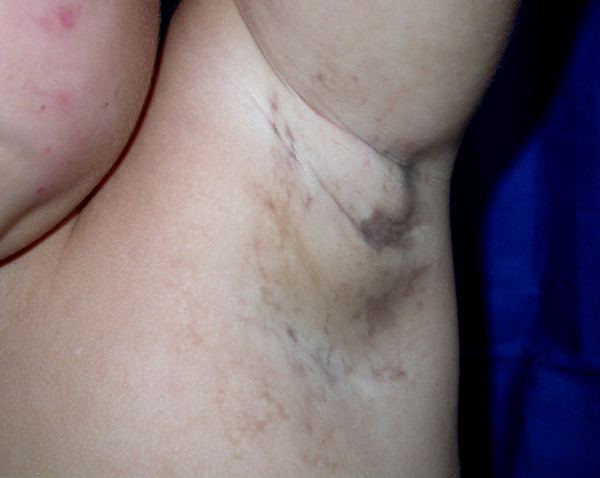 | ||
Blaschko's lines, also called the lines of Blaschko, named after Alfred Blaschko, are lines of normal cell development in the skin. These lines are invisible under normal conditions. They become apparent when some diseases of the skin or mucosa manifest themselves according to these patterns. They follow a "V" shape over the back, "S" shaped whirls over the chest, and sides, and wavy shapes on the head.
The lines are believed to trace the migration of embryonic cells. The stripes are a type of genetic mosaicism. They do not correspond to nervous, muscular, or lymphatic systems. The lines can be observed in other animals such as cats and dogs.
German dermatologist Alfred Blaschko is credited with the first demonstration of these lines in 1901.
Conditions distributed along Blaschko's lines
The skin lesions that follow the Blaschko's lines are varied. They include genetic, congenital and acquired (i.e. non-genetic) conditions. Examples include:
